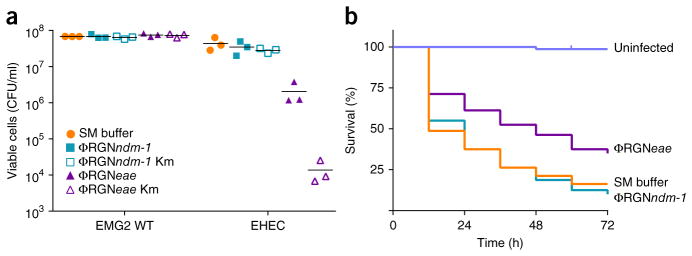Figure 3.

ΦRGN particles elicit sequence-specific toxicity against enterohemorrhagic E. coli in vitro and in vivo. (a) E. coli EMG2 wild-type (WT) cells or ATCC 43888 F′ (EHEC) cells were treated with SM buffer, ΦRGNndm-1 or ΦRGNeae at a multiplicity of infection (MOI) ~100 and plated onto LB agar to enumerate total cell number or LB+kanamycin (Km) to select for transductants with ΦRGNs (n = 3). (b) G. mellonella larvae were injected with either PBS or approximately 4 × 105 colony forming units (CFU) of EHEC. Subsequent administration of ΦRGNeae at MOI ~30 significantly improved survival compared to SM buffer or ΦRGNndm-1 treatment (Log-rank test, P < 0.001). Survival curves represent an aggregate of four independent experiments, each with 20 worms per treatment group (n = 80).
